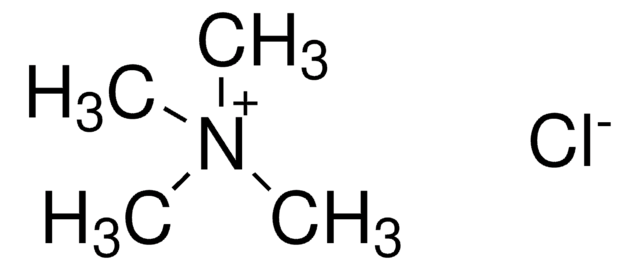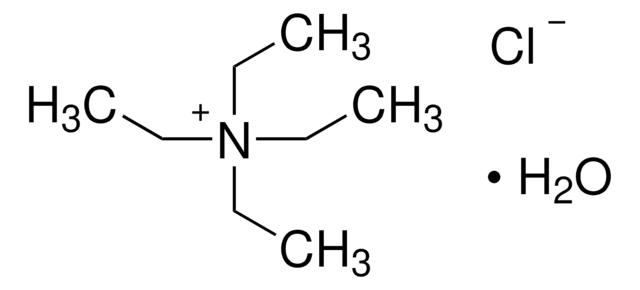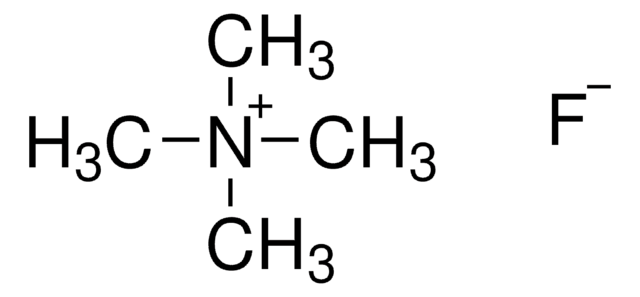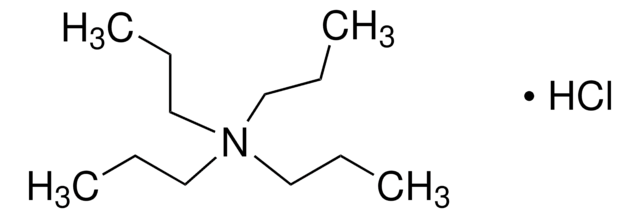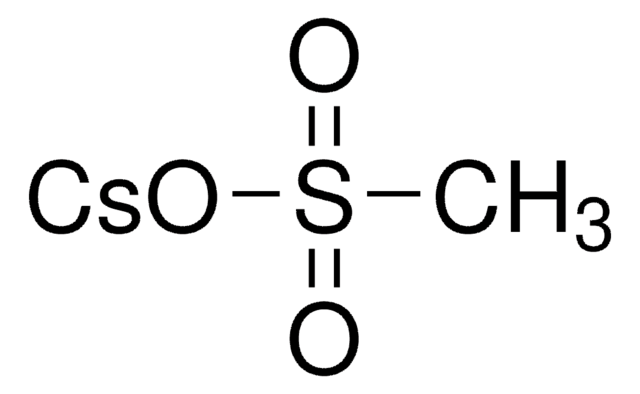113042
Tetraethylammonium chloride hydrate
Synonym(s):
TEA chloride
Sign Into View Organizational & Contract Pricing
All Photos(3)
About This Item
Linear Formula:
(C2H5)4N(Cl) · xH2O
CAS Number:
Molecular Weight:
165.70 (anhydrous basis)
Beilstein:
3563247
EC Number:
MDL number:
UNSPSC Code:
12161900
PubChem Substance ID:
NACRES:
NA.25
Recommended Products
Assay
≥97.0% (titration by HClO<SUB>4</SUB>)
Quality Level
mol wt
165.70 g/mol (anhydrous basis)
technique(s)
protein purification: suitable
SMILES string
[Cl-].[H]O[H].CC[N+](CC)(CC)CC
InChI
1S/C8H20N.ClH.H2O/c1-5-9(6-2,7-3)8-4;;/h5-8H2,1-4H3;1H;1H2/q+1;;/p-1
InChI key
CALLTGJPWMIDPC-UHFFFAOYSA-M
Application
Phase-transfer catalyst employed in polymerization reactions. Electrolyte used in membrane transport studies.
Signal Word
Warning
Hazard Statements
Precautionary Statements
Hazard Classifications
Eye Irrit. 2 - Skin Irrit. 2
Storage Class Code
11 - Combustible Solids
WGK
WGK 3
Flash Point(F)
201.2 °F - closed cup
Flash Point(C)
94 °C - closed cup
Personal Protective Equipment
dust mask type N95 (US), Eyeshields, Gloves
Choose from one of the most recent versions:
Already Own This Product?
Find documentation for the products that you have recently purchased in the Document Library.
Customers Also Viewed
H Tatsuta et al.
The Journal of general physiology, 103(3), 429-446 (1994-03-01)
Patch-clamp studies were carried out in villus enterocytes isolated from the guinea pig proximal small intestine. In the whole-cell mode, outward K+ currents were found to be activated by depolarizing command pulses to -45 mV. The activation followed fourth order
Coll. Polymer Sci., 272, 971-971 (1994)
Makromol. Chem., Rapid Commun., 14, 173-173 (1993)
Karen Mruk et al.
Proceedings of the National Academy of Sciences of the United States of America, 109(34), 13579-13583 (2012-08-08)
Calmodulin (CaM) is a ubiquitous intracellular calcium sensor that directly binds to and modulates a wide variety of ion channels. Despite the large repository of high-resolution structures of CaM bound to peptide fragments derived from ion channels, there is no
Dong-Mei Zhang et al.
PloS one, 7(10), e47030-e47030 (2012-10-12)
Cajaninstilbene acid (CSA) is a major active component present in the leaves of Cajanus cajan (L.) Millsp. The present study explores the underlying cellular mechanisms for CSA-induced relaxation in rat renal arteries. Vascular reactivity was examined in arterial rings that
Our team of scientists has experience in all areas of research including Life Science, Material Science, Chemical Synthesis, Chromatography, Analytical and many others.
Contact Technical Service
